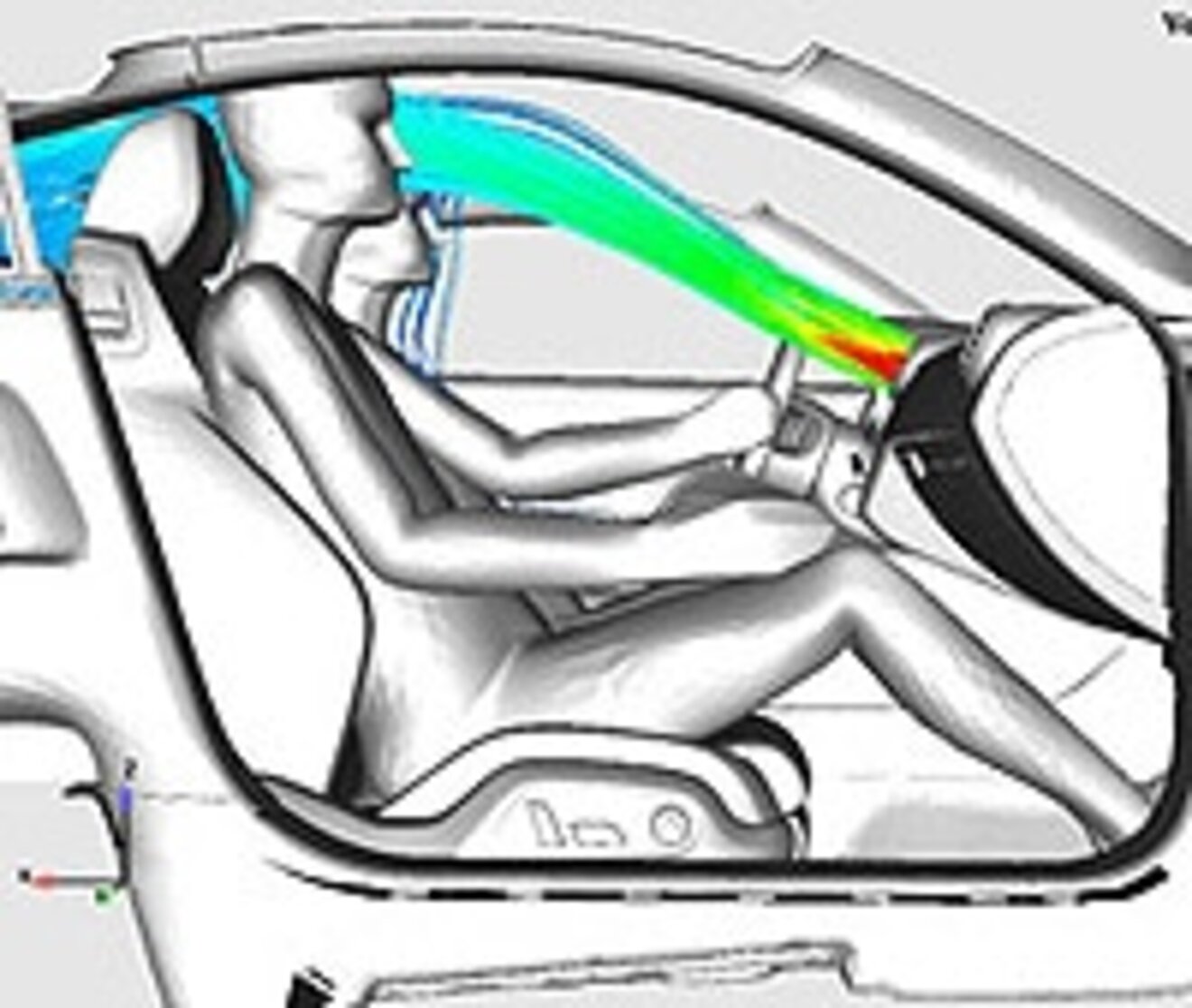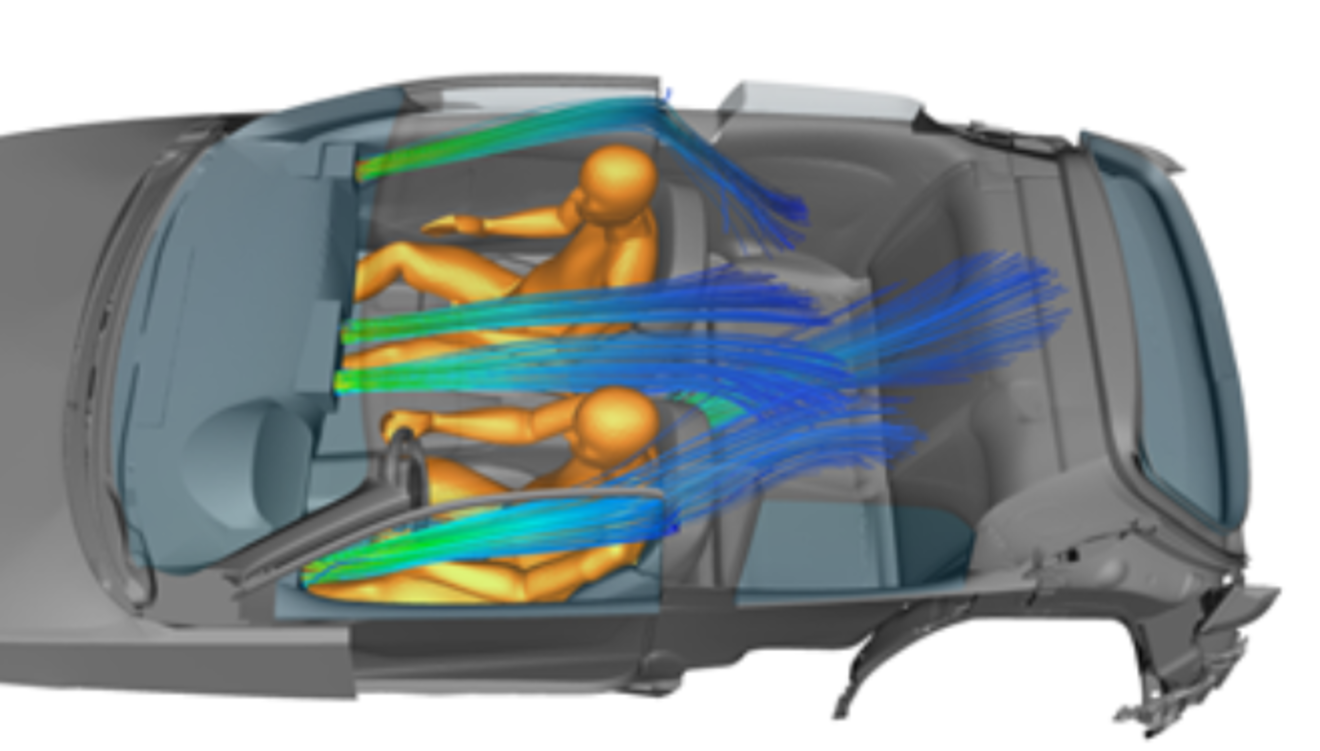Interior air conditioning car


Task / Calculation
How well the interior air conditioning works in a vehicle is most noticeable when the outside temperatures are very cold or very warm.
If the outside temperatures are very cold, the vehicle should be warmed up as quickly and evenly as possible. In winter, the windows should also become ice-free quickly. This is also known as deicing.
When outside temperatures are sweltering, on the other hand, the temperature of the heated vehicle should be cooled down and maintained at a comfortable level. The technical term is pulldown.
The interface from the air-conditioning unit to the vehicle interior is provided on the one hand by the manways in the dashboard, and on the other hand by the less visible outlet ducts at various points in the vehicle.
Air is distributed in the vehicle via so-called air-conditioning ducts. Since these are established at a very late stage in the vehicle, narrow spots can have a negative impact on the vehicle's ventilation concept.
Method development
Merkle & Partner developed methods for the interior air conditioning of vehicles very early on in the 2000s, using flow calculation to optimize, for example, the manways.
For air conditioning ducts, automatic methods for optimizing pressure losses were tested and used.
Furthermore, it was investigated how the subjective feeling of the occupants can be described by tangible parameters. After all, there should be no drafts and the temperature should be as uniform as possible everywhere.
In a 2012/2013 research project, the procedure was extended to see how the small amount of available heat can be optimally used in electric vehicles or where it disappears to.
Project example
The attached picture shows projects from the 2000s on an Audi TT. Here, different nozzle positions of the air intake were considered and optimized. Specially developed modules allowed at that time for the first time, a semi-automated alignment of the fins.
At that time, the gender issue already gained some momentum, as dummies in the calculation model were first a man sitting in the driver's seat and a woman in the passenger seat, which caused outrage. In the meantime, virtually genderless beings sit on all seats.
The intermediate models are much more detailed. The questions have also become more precise, looking at acoustic behavior as well as temperature.
The pictures shown (by courtesy of Audi AG, Ingolstadt)
have therefore almost earned an H license plate.
Keywords
- Indoor air conditioning
- Deicing
- Comfort behavior
- Flow simulation
- Air conditioning
- Air conditioner
- Air conditioning duct
- Pulldown
- Manifold
- Temperature distribution
- Vehicle interior
Courtesy of Audi AG, Ingolstadt

